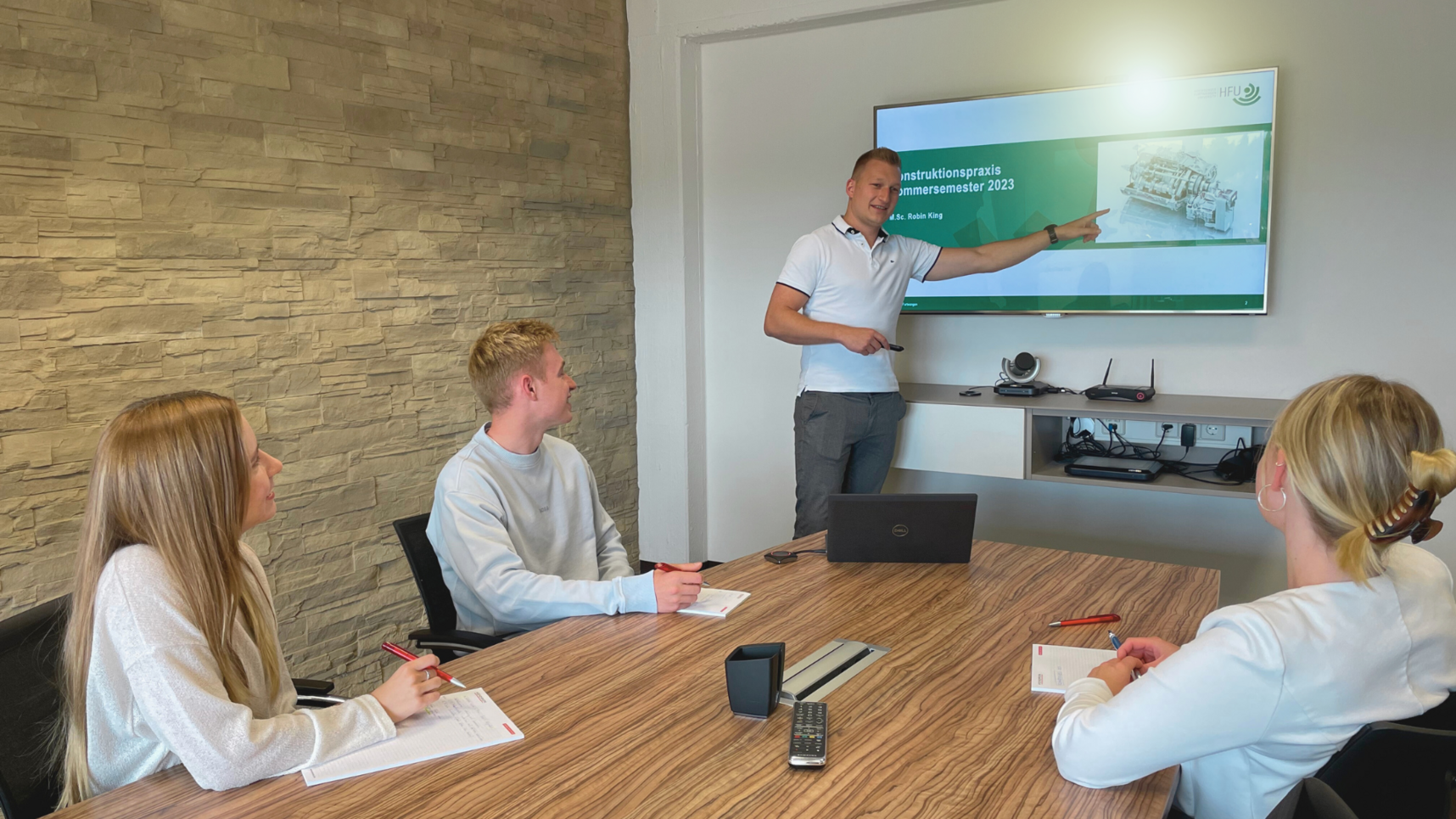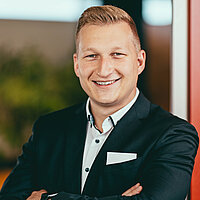Life as a Kendrion engineer
As Development Engineer at Kendrion, I’m responsible for developing integrated and customized brakes. Kendrion brakes are used to secure safe operation in robotics, electric vehicles for warehouses, medical equipment, wind turbines and more. My most recent projects included an integrated brake (installed in a drive motor) for a collaborative robot and one for an operating table. I enjoy figuring out a solution that is both compact and effective. I don’t do this alone. The engineering process involves people from different disciplines and the customer, and we all work together to deliver the perfect solution. This requires a healthy dose of curiosity, problem-solving skills, creativity, and a lot of patience!
Translating real-world challenges into learning experiences
I teach students mechanical engineering design at Hochschule Furtwangen University (HFU). At the beginning of the semester, I give them a constructive task and a ‘strength calculation check’ assignment. Working in groups of three they make manual drawings that we review together in class once a week. The final assignment? Creating an original CAD drawing.
Working with the students I use the process we follow at Kendrion which involves working with a cross-function team and a lot of brainstorming, calculating, designing, drawing and multiple prototypes. Being able to listen to others, respect their views and work on a joint solution is critical to success. And just as we do at Kendrion, the teams present and justify their design to their fellow students. This way everybody learns!
What the students get out of it
Working on a real-world project gives the students a good understanding of what real life as an engineer is like. It helps them think critically, identify problems, and come up with creative solutions that are feasible and efficient. Many students think that engineers sit behind a desk and work in solitude. They’re surprised to find that it’s actually a very active, collaborative process with plenty of room for imagination. I try to empower them to raise ideas, try things out and make mistakes. This is extremely important in the fast-evolving industry we work in. I share some of my own mistakes, which seems to put everyone at ease. For many this journey is challenging, but as the course progresses, I see their confidence grow.
How what I’m learning feeds into Kendrion
I believe that, regardless of age and function, we can all learn from each other. By working with my students, I’ve become a better listener, communicator, and team member. And I’ve become even more open to accepting different perspectives. Sometimes students present solutions I’ve never seen before or share their experiences as trainees at other companies. I’m really inspired by my students. Some of them have a really hard time but they persevere and achieve a good result in the end. It’s very satisfying for them and for me.
At Kendrion, we’re always looking for smart, curious minds. Working with the students I have a pretty good idea of what matters to them, and which of them would make a good fit with our company. We have some trainees from the university working with us now. Being at the university weekly also allows me to use its fantastic resources. The university has an extensive network of other lecturers whose brains I can pick, and a broad array of lab equipment that we can use if needed. Of course, the universities benefit too. Business lecturers bring engineering theory to life, and teach softer skills such as working in teams, active listening, and confidence, while sparking curiosity and passion for the profession.
Is lecturing for you?
Universities are increasingly looking for lecturers. If, like me, you are passionate about what you do and would love to share that with young students, perhaps lecturing is for you. As a lecturer, I’m not only an engineer but also an influencer, a workshop facilitator, mentor, public speaker, innovator and many more roles in between. Personally, I find it very rewarding!




